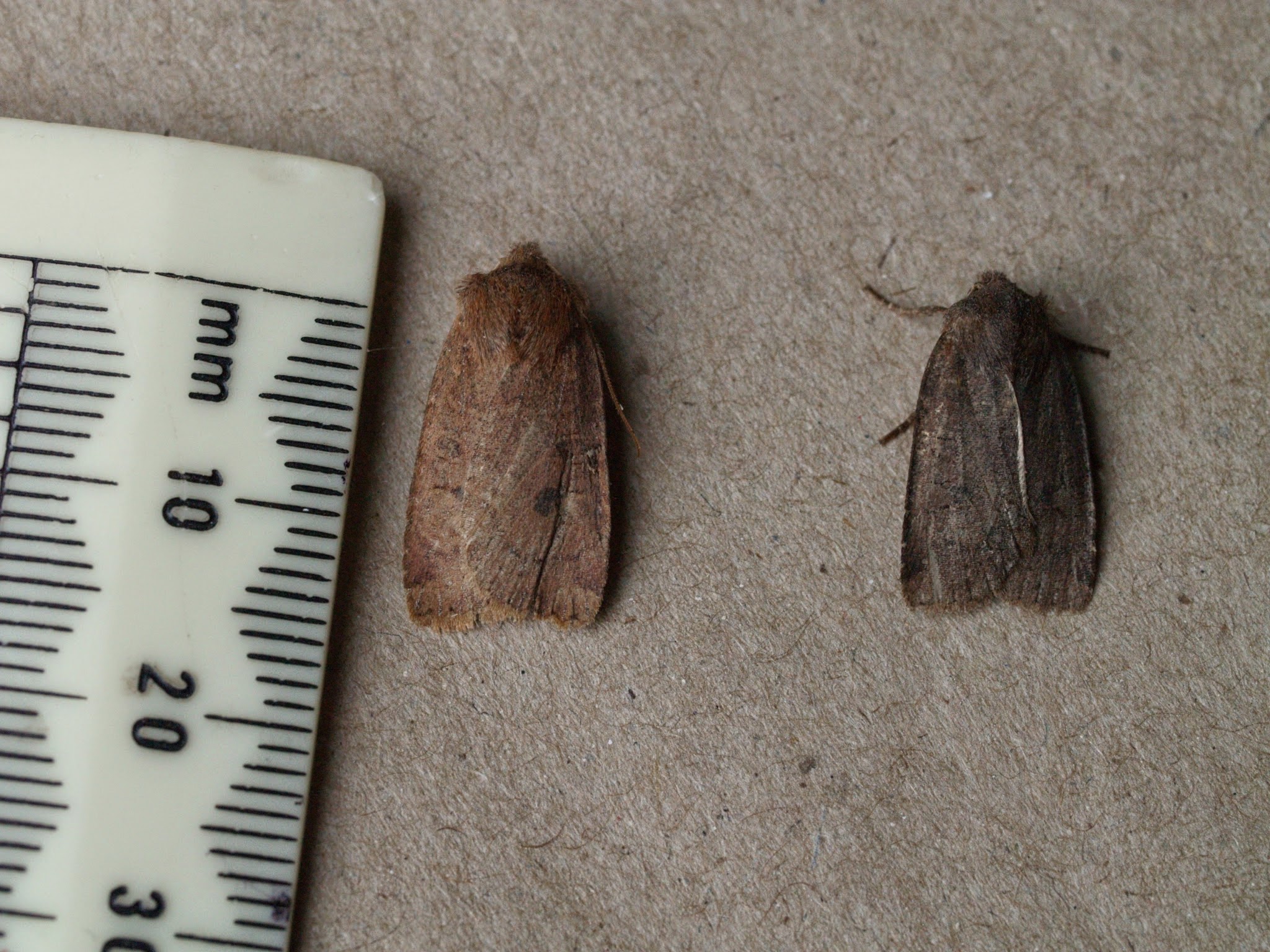I had 53 moths in the UV garden trap last night, 14 different species. New ones for me this year included Oak Nycteoline, Brindled Beauty and a pair of Early Thorns. There was a single Chestnut, plus a darker similar shaped moth that I am not sure about. I have photographed them together, with the Chestnut on the left, and the moth I need help with on the right.
I had 6 micros in the trap, including Dyseriocrania subpurpurella, which is photographed below. Please tell me if I have the ID wrong!
I also had a Leek Moth, which I identified after looking through earlier blogs and finding Martin Wainwright's picture posted on 17 March.
Steve Trigg, Cookham



To me that looks like a candidate for Dark Chestnut, although that's a moth I don't see often and always struggle to be certain of from photos, the Chestnut can sometimes be very dark. I'd be interested to hear what others think about whether we can confirm this one. See also the detailed information on this German site:
ReplyDeletehttp://www.lepiforum.de/lepiwiki.pl?Conistra_Ligula
which suggests that the colour of the fringes on the hindwings is the easiest distinguishing feature (reddish-yellow in Chestnut, grey in Dark Chestnut).
The costa looks curved and at the apex it is rounded, so I'd opt for another Chestnut. Also it's not shiny. The examples side by side on the UTB website difficult species guides show it nicely. As for the Eriocranid, someone else can confirm that, I find them hard without dissection.
ReplyDeleteThe Chestnut is difficult, as you might have realised! The left side looks vaguely as if it might be Dark Chestnut but the right doesn't. If I were you I'd confine it to the bin and hope for a better specimen of Dark Chestnut in the autumn when fresh examples will mean that it might be easier to differentiate the two species.
ReplyDeleteThe micro is almost certainly Eriocrania subpurpurella (assuming you've got oak very close by) but it will need close examination to ensure that it isn't one of the birch feeders from the same family.
I thought there was a bit of a sharp angle to the apex on the darker individual (on the left-hand wing at least), but I wasn't 100% convinced, and I find all the wing shape characters hard to judge especially on specimens that are a bit worn, as most are by this time of year. So I think Peter is correct, and I certainly can't prove that he isn't!
ReplyDeleteThe UTB website guide that Peter mentions is available here:
http://upperthames-butterflies.org.uk/moths_difficult.html
Many thanks everyone. I shall play safe and put it in the not identified bin for now. I have found a helpful article called "Challenging Chestnuts" by Steve Whitehouse at this site - http://www.birdguides.com/webzine/article.asp?a=3135
DeleteRe the micro, I have several large oak trees close to the house, but I do not know of any birch trees in the vicinity.
Regards, Steve